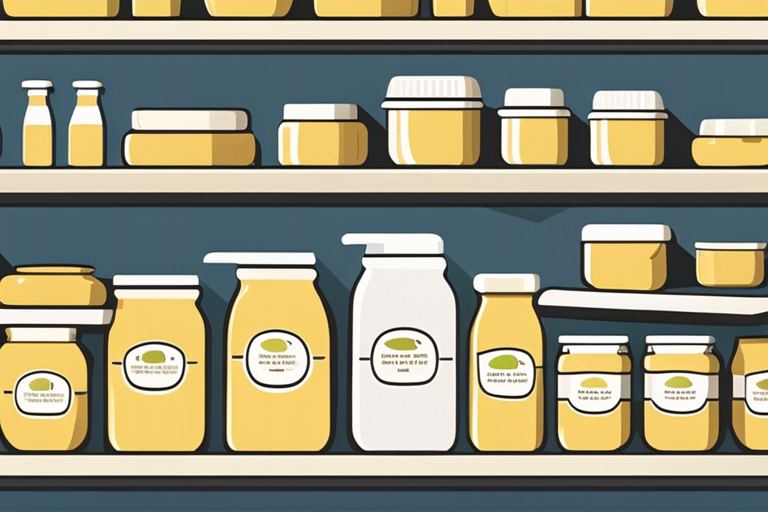
The Shelf Life of Mayonnaise: Everything You Need to Know
Get Your Free Food Safety Cheat Sheet
30 most common foods with instant answers. Print it and stick it on your fridge—completely free!
The Shelf Life of Mayonnaise: Everything You Need to Know
Mayonnaise is a popular condiment that adds creaminess and flavor to a variety of dishes, from sandwiches to salads. However, like all perishable foods, mayonnaise has a limited shelf life. Understanding how long mayonnaise lasts and how to properly store it is key to maintaining food safety and quality. In this comprehensive guide, we will explore everything you need to know about the shelf life of mayonnaise.
How Long Does Mayonnaise Last?
Mayonnaise typically has a shelf life of about 2 to 3 months when stored in the refrigerator. However, the shelf life can vary depending on several factors, including the brand of mayonnaise, the ingredients used, and how it is stored. Here are some key points to consider:
Factors Affecting Mayonnaise Shelf Life
-
Ingredients: Mayonnaise made with pasteurized eggs and vinegar tends to have a longer shelf life compared to homemade mayonnaise or products containing raw eggs.
-
Storage: Proper storage is crucial for extending the shelf life of mayonnaise. Keeping mayonnaise refrigerated at all times is essential to prevent bacterial growth.
-
Contamination: Avoid cross-contamination by using clean utensils when scooping out mayonnaise to prevent introducing bacteria into the jar.
How to Store Mayonnaise Properly
Proper storage is key to maintaining the quality and safety of mayonnaise. Follow these tips to ensure your mayonnaise stays fresh for as long as possible:
Refrigeration
- Store mayonnaise in the refrigerator at a temperature below 40°F (4°C).
- Keep the mayonnaise tightly sealed when not in use to prevent air and bacteria from entering the container.
- Avoid storing mayonnaise in the refrigerator door as temperature fluctuations can impact its shelf life.
Avoiding Contamination
- Use clean utensils to scoop out mayonnaise, and never double-dip to prevent cross-contamination.
- Make sure to wipe the jar's rim clean after each use to prevent the buildup of residue that can harbor bacteria.
Check for Signs of Spoilage
- Discard mayonnaise if you notice any changes in color, texture, or odor. Mold growth is a clear indication that the mayonnaise has spoiled and should be thrown away.
Tips for Extending Mayonnaise Shelf Life
While mayonnaise does have a limited shelf life, there are a few tips and tricks you can use to extend its freshness:
-
Use a Clean Utensil: Always use a clean spoon or knife to scoop out mayonnaise to prevent introducing bacteria into the jar.
-
Keep it Sealed: Make sure the jar is tightly sealed after each use to prevent air exposure, which can lead to oxidation and spoilage.
-
Store it Properly: Keep mayonnaise refrigerated at all times and avoid leaving it out at room temperature for extended periods.
Conclusion
In conclusion, understanding the shelf life of mayonnaise and how to store it properly is essential for food safety and quality. By following the tips outlined in this guide, you can ensure that your mayonnaise stays fresh and delicious for longer periods. Remember to always check for signs of spoilage and discard any mayonnaise that shows signs of contamination. With proper storage and handling, you can enjoy your favorite condiment safely and deliciously.

Authoritative Food Safety References
These agencies and university labs inform every tip and health precaution we publish.
USDA FoodKeeper – Cold Storage Guidelines
Official refrigerator, freezer, and pantry timelines maintained by the U.S. Department of Agriculture.
Visit USDA FoodKeeperFDA Produce Safety Rule & Grower Guidance
Field-to-fridge handling practices that prevent contamination of fruits, vegetables, and leafy greens.
Visit FDA Produce SafetyCDC Foodborne Illness Prevention Hub
Surveillance-backed guidance on pathogens, symptoms, and steps to reduce foodborne illness risk.
Visit CDC Food SafetyUC Davis Postharvest Technology Center
University research detailing optimal storage atmospheres for produce after harvest.
Visit UC Davis PostharvestPenn State Extension – Home Food Preservation & Safety
Peer-reviewed extension bulletins on safe canning, chilling, and reheating practices.
Visit Penn State ExtensionCan mayonnaise go bad if left out of the refrigerator?
How can I tell if mayonnaise has gone bad?
Can I freeze mayonnaise to extend its shelf life?
Is it safe to consume mayonnaise past its expiration date?
Get Your Free Food Safety Cheat Sheet
30 most common foods with instant answers. Print it and stick it on your fridge—completely free! Want more? Upgrade to the complete guide with 70+ foods.
Scan your food directly and get instant safety info using our AI-powered camera feature.